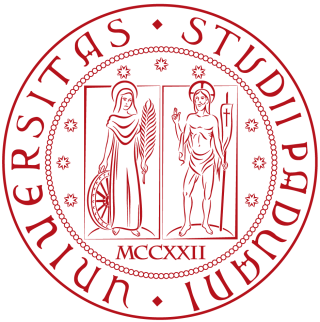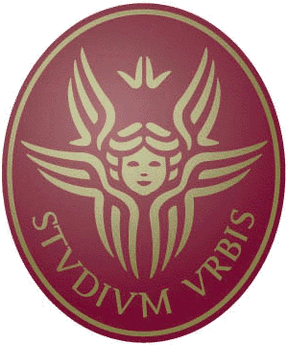
The conservation and restoration of cultural property focuses on protection and care of cultural property, including artworks, architecture, archaeology, and museum collections. Conservation activities include preventive conservation, examination, documentation, research, treatment, and education. This field is closely allied with conservation science, curators and registrars.
Computational archaeology describes computer-based analytical methods for the study of long-term human behaviour and behavioural evolution. As with other sub-disciplines that have prefixed 'computational' to their name, the term is reserved for methods that could not realistically be performed without the aid of a computer.

The University of Bologna is a public research university in Bologna, Italy. Founded in 1088 by an organised guild of students (studiorum), it is the oldest university in continuous operation in the world, and the first degree-awarding institution of higher learning. At its foundation, the word universitas was first coined. The university's emblem carries the motto, Alma Mater Studiorum, the date A.D. 1088. With over 90,000 students, the University of Bologna is one of the largest universities in Europe.

The University of Padua is an Italian public research university in Padua, Italy. It was founded in 1222 by a group of students and teachers from the University of Bologna, who previously settled in Vicenza, thus, it is the second-oldest university in Italy, as well as the world's fifth-oldest surviving university.

The University of Milan, officially shortened in UNIMI, or colloquially referred to as La Statale, is a public research university in Milan, Italy. It is one of the largest universities in Europe, with about 60,000 students, and a permanent teaching and research staff of about 2,000.

The Sapienza University of Rome, formally the Università degli Studi di Roma "La Sapienza", abbreviated simply as Sapienza ("wisdom"), is a public research university located in Rome, Italy. It was founded in 1303 and is as such one of the world's oldest universities, and with 122.000 students, it is the largest university in Europe. Due to its size, funding, and numerous laboratories and libraries, Sapienza is a major education and research centre in Southern Europe. The University is located mainly in the Città Universitaria, which covers 44 ha near the Tiburtina Station, with different campuses, libraries and laboratories in various locations in Rome.

The Università della Svizzera italiana, sometimes referred to as the University of Lugano in English-speaking contexts, is a public Swiss university established in 1995, with campuses in Lugano, Mendrisio and Bellinzona. USI is the only university in Switzerland where the official language is Italian, but many of its programs are in English.

Iuav University of Venice is a university in Venice, Italy. It was founded in 1926 as the Istituto Universitario di Architettura di Venezia as one of the first Architecture schools in Italy. The university currently offers several undergraduate, graduate and higher education courses in Architecture, Urban Planning, Fashion, Arts, and Design.

Europa Nostra is a pan-European Federation for Cultural Heritage, representing citizens' organisations that work on safeguarding Europe's cultural and natural heritage. It is the voice of this movement to relevant international bodies, in particular the European Union, the Council of Europe and UNESCO. It has consultative status with UNESCO and is recognised as an NGO partner.

The European University Institute (EUI) is an international postgraduate and post-doctoral research-intensive university and an intergovernmental organisation with juridical personality, established by its founding member states to contribute to cultural and scientific development in the social sciences, in a European perspective. Its main campus is located in the hills above Florence in Fiesole, Italy.

With respect to cultural property, conservation science is the interdisciplinary study of the conservation of art, architecture, technical art history and other cultural works through the use of scientific inquiry. General areas of research include the technology and structure of artistic and historic works. In other words, the materials and techniques from which cultural, artistic and historic objects are made.

Archaeology or archeology is the study of human activity through the recovery and analysis of material culture. The archaeological record consists of artifacts, architecture, biofacts or ecofacts, sites, and cultural landscapes. Archaeology can be considered both a social science and a branch of the humanities. It is usually considered an independent academic discipline, but may also be classified as part of anthropology, history or geography.

The University of Auckland Faculty of Arts is a faculty within the University of Auckland that teaches humanities, social sciences, languages and Indigenous studies, located on Symonds Street, in Auckland, New Zealand.

The International Centre for the Study of the Preservation and Restoration of Cultural Property (ICCROM) is an intergovernmental organization dedicated to the preservation of cultural heritage worldwide through training, information, research, cooperation and advocacy programmes. It aims to enhance the field of conservation-restoration and raise awareness to the importance and fragility of cultural heritage.
Ceramic petrography is a laboratory-based scientific archaeological technique that examines the mineralogical and microstructural composition of ceramics and other inorganic materials under the polarised light microscope in order to interpret aspects of the provenance and technology of artefacts.

Andrzej Stanisław Tomaszewski was a Polish historian of art and culture, architect, urban planner and archaeologist. He was investigator of medieval architecture and art in Poland and abroad. He was considered one of the most important and influential international scientists in the preservation and conservation of cultural heritage.

A conservation scientist is a museum professional who works in the field of conservation science and whose focus is on the research of cultural heritage through scientific inquiry. Conservation scientists conduct applied scientific research and techniques to determine the material, chemical, and technical aspects of cultural heritage. The technical information conservation scientists gather is then used by conservator and curators to decide the most suitable conservation treatments for the examined object and/or adds to our knowledge about the object by providing answers about the material composition, fabrication, authenticity, and previous restoration treatments.
Maurizio Diana is an Italian geologist, physicist and painter. In his scientific research activities he is remembered particularly for his efforts in the development of technologies in the field of Cultural Heritage.

The Center for Scientific Studies in the Arts (NU-ACCESS) is a collaborative initiative between Northwestern University and the Art Institute of Chicago. The institute is dedicated to the convergence diverse scientific disciplines applied to the realm of art conservation and study. Established in 2004 and supported by the Andrew W. Mellon Foundation, the center employs scientific and technical methods to investigate and preserve artistic and cultural artifacts, helping to uncover details about their creation, history, and conservation.




















